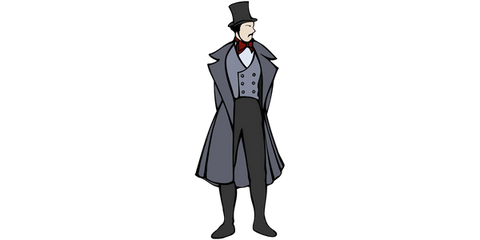When you think of cannabis users, what first comes to mind? How many of you said 19th-century French poets, painters, and philosophers?
This image may seem different from the caricature many people have in their minds of the unmotivated, couch-locked stoner wiping Dorito crumbs off their chest. However, this stereotype usually isn’t accurate. For centuries, cannabis has inspired creativity in some of the past generations’ most influential thinkers. Perhaps the best illustration of this comes to us from Paris circa 1845 behind the doors of the clandestine Club des Hashischins.
What Was The Club Des Hashischins?

The Club des Hashischins was a collection of prominent French elites, intellectuals, and literary giants who often came together to explore the depths of the human condition with the aid of psychedelic compounds—most often hash.
We’re not talking about fried potatoes here. Hash, sometimes stylized as hashish, is a potent form of cannabis. It’s essentially the original concentrate. To make hash, the frosty cannabinoid-rich trichomes that pepper the outside of premium hemp flowers and marijuana buds are compressed under intense heat and pressure. When this compression is complete, the result is a dark, sticky, crumbly, brick-like product that can be either smoked or consumed with food. Because hash makers use the most cannabinoid-rich parts of the cannabis plant to make their products, these little bricks pack a powerful punch of THC and CBD. At this time, cannabis flower itself was rarely smoked, so there wouldn’t be any hemp flower joints being passed around.
Members of the Club des Hashischins would meet monthly in secret at the Hotel de Lauzun and perform “seances” where they would consume hash mixed with coffee, pistachios, or fragrant spices like nutmeg and cinnamon. These concoctions produced full-on hallucinogenic effects for the early psychonauts who regularly attended the club’s meetings. The noted poet Théophile Gautier wrote of his own hallucinogenic experience after attending one such seance in the French Laguange literary magazine the Revue des deux Mondes:
“My neighbors began to appear somewhat strange. Their pupils became big as a screech owl's; their noses stretched into elongated proboscises; their mouths expanded like bell bottoms. Faces were shaded in supernatural light. One among them, a pale countenance in a black beard, laughed aloud at an invisible spectacle; another made incredible efforts to raise his glass to his lips and the resulting contortions aroused deafening hoots from his companions; a man, shaken with nervous convulsions, turned his thumbs with remarkable agility; another, fallen against the back of his chair, his eyes unseeing and his arms inert, let himself drift voluptuously in the bottomless sea of nothingness.” - Théophile Gautier
Famous Members Of The Club Des Hashischins

Gautier wasn’t the only literary legend who attended seances at the Hotel de Lauzun. Victor Hugo, the playwright, and poet, best known for the timeless classic Les Miserables, often found himself eating hash in the salon. Alexander Dumas, the author of The Count Of Monte Cristo, took time between penning revenge fantasies to imbibe with his club members. Not surprisingly, Charles Baudelaire, the infamous lyrical poet responsible for introducing France to the works of Edgar Allen Poe, also participated in these psychedelic seances.
You didn’t have to be a writer to attend. Several medical professionals, including psychiatrist Dr. Jacques-Joseph Moreau, entered the Hotel de Lauzun to discover more about the inner working of the human mind. Dr. Moreua went on to become the first physician to create a detailed and systematic account of how drugs affect the central nervous system. Many of his experiments were performed during seances, using himself as the lab rat.
How Hash Got To France

Cannabis isn’t native to Europe, and 19th-century farmers certainly wouldn’t find any wild hemp flowers growing among the grapes in Bordeaux.
Until Napolean Bonaparte invaded Egypt in an attempt to disrupt British trade routes, most Frenchmen had never heard of hash. However, the citizens of many North African and Middle Eastern countries were already consuming plenty of potent cannabis products. When Napolean’s troops returned from their campaign, they brought with them hash and introduced their countrymen to psychedelic drugs and hemp flower benefits.
Carrying On The Legacy Of the Club Des Hashischins
We at E1011 Labs want to carry on the tradition of the Club des Hashischins by inspiring creativity with our feel-good hemp. Enjoy the artisanal hemp flower found in each of our stelo™ and Ari53™, and unlock your imagination. Who knows, you may just be the next Gérard de Nerval.



